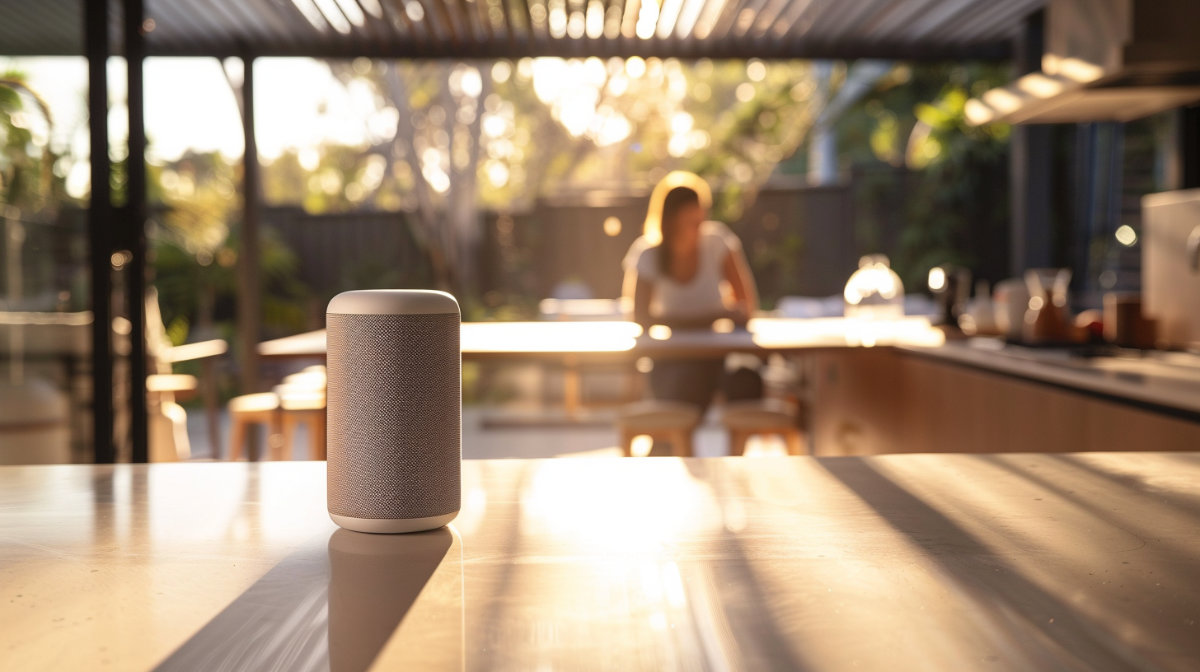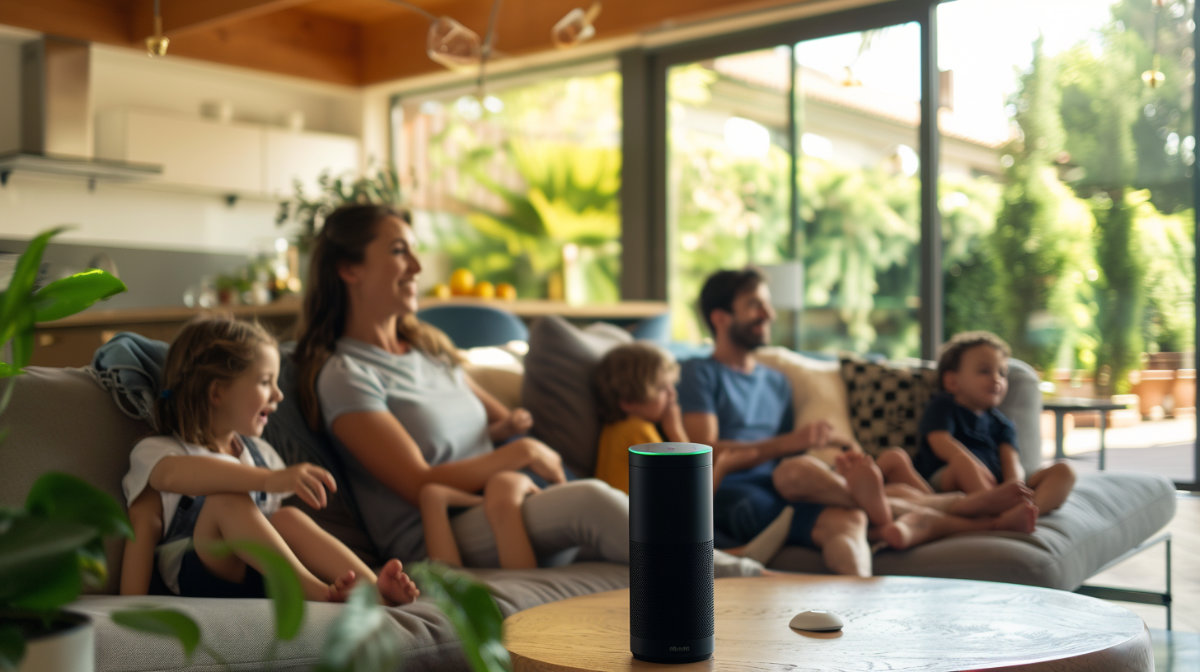Discover how voice search optimization can help local businesses in Australia attract more customers. Learn how to adapt your content and improve your chances of being discovered in voice searches. Voice search is a growing trend, and local business owners can capitalize on this shift with just a few targeted adjustments.
Have you ever been in the middle of a busy workday, hands full, and needed a quick answer without the hassle of typing? For many Australians, this scenario plays out every day, whether it’s checking the weather, searching for the nearest coffee shop, or asking for tonight’s footy scores. Voice assistants like Siri, Google Assistant, and Alexa have become our go-to for these tasks, making voice search a normal part of daily life.
This shift to voice search presents an exciting opportunity for local shop owners. How people look for information is evolving, and it’s no longer limited to just tapping on keyboards or scrolling through search results. More and more customers are speaking their queries, and often, they’re looking for immediate, nearby solutions – precisely the kind of searches that local businesses can capitalise on. Imagine someone driving through your suburb and asking, “Where’s the best bakery near me?” This is where voice search optimisation becomes your ticket to attracting those potential customers.
While many business owners know traditional SEO (search engine optimisation), voice search optimisation is still relatively new but rapidly gaining importance. The good news? It doesn’t require a complete overhaul of your online presence. With a few targeted adjustments, local businesses can significantly improve their chances of being discovered in voice searches – and the process is simpler than you might think.

Introduction to Voice Search Optimisation
Let’s start with the basics. Voice search optimisation (VSO) is essentially adapting your content to ensure it ranks well when someone uses a voice assistant to search for information. Instead of typing, customers speak directly to their devices, asking questions like “What’s the best pizza place in Melbourne?” or “When is the next tram to Flinders Street?” These voice queries are often longer and more conversational than traditional searches, and they expect quick, accurate answers.
For local businesses in Australia, the significance of voice search can’t be overstated. In a country where nearly 20% of Australians have already used voice-activated speakers, voice search is clearly more than just a passing trend. It’s become a regular part of finding local services and shops. Whether they’re asking for nearby restaurants, looking for directions to a shop, or checking store opening hours, voice search shapes how Australians interact with their surroundings.
And here’s the exciting part. As a local shop owner, you’re perfectly positioned to take advantage of this shift. Voice searches tend to prioritise businesses that are nearby, relevant, and optimised for local SEO. That means with just a few tweaks, your business could be the one customers find when they make a voice query. This not only increases your visibility but also opens up new avenues for customer engagement.
Growing Trend in Australia
They use it not just for fun or to set reminders but to actively engage with businesses – whether ordering food, finding the nearest gym, or hunting for that perfect local coffee spot. Urban areas, too, are seeing higher adoption rates, driven by better internet infrastructure and the growing presence of smart speakers like Google Home and Amazon Echo. For instance, they might ask, “What’s the best pizza place in Melbourne?” or “When is the next tram to Flinders Street?” These voice queries are often longer and more conversational than traditional searches, and they expect quick, accurate answers.
Think of voice search optimisation, like tailoring your window display to attract foot traffic. You wouldn’t want a passerby to miss your shop because the display didn’t catch their eye, right? In the same way, optimising for voice search ensures your business is visible to people actively seeking out the services you provide – but they’re asking for their devices instead of walking past your store.
Understanding Voice Search Behaviour
When you think about how people search online, there’s a big difference between typing a query and simply asking out loud. Voice search is much more conversational, which every local shop owner needs to understand. Imagine chatting with a customer in your shop – they might ask, “What’s the best product for dry skin?” rather than just saying “dry skin product.” Voice search follows the same natural flow, with questions often beginning with “who,” “what,” “where,” or “how.”
User Intent
The main difference with voice searches is how specific and immediate the queries are. While someone might type “shoe store Melbourne,” a voice search is likely to be something like “Where’s the nearest shoe store with good reviews?” The user wants direct answers—quickly. This presents an opportunity for local businesses to position themselves as the obvious choice for these voice searches by understanding and responding to customer intent.
Demographics
In Australia, voice search isn’t limited to tech-savvy teenagers. While it’s true that millennials and Gen Z are leading the way in voice search adoption, it’s becoming increasingly popular across all age groups. Busy professionals use it to search on the go; parents use it while multitasking, and older Australians are also beginning to embrace its simplicity. This broadening demographic means that voice search optimisation isn’t just a trendy marketing trick – it’s a long-term strategy that will appeal to diverse customers and provide lasting benefits to your business.
For local businesses, understanding who uses voice search in your area can help you tailor your content accordingly. For instance, if you run a café in a bustling part of Melbourne, your voice search strategy might focus on younger, urban professionals asking for “best coffee shops near me.” On the other hand, a suburban garden centre might focus on families or retirees asking for “best plants for outdoor gardens.” Knowing who uses voice search helps you target the right content to the right audience.
Geographical Disparity
Interestingly, voice search usage is more prominent in urban areas of Australia, where better internet infrastructure and a higher concentration of smart devices are the norm. Cities like Sydney, Melbourne, and Brisbane are hotbeds for voice search activity, particularly for local services and businesses. This makes sense – people in cities are often on the move, relying on voice search to find fast, convenient solutions, whether finding the nearest petrol station or open pharmacy.
But don’t worry if your shop is in a more rural area. While adoption rates may be slower outside the cities, the growing voice search trend is expected to spread. Plus, local businesses in smaller communities can stand out when optimised for voice search since the competition might not be as fierce.
Understanding how voice search users behave, who they are, and where they’re located can help your local shop create content that speaks directly to their needs. And remember – the more you align your content with the natural, conversational style of voice queries, the more likely your business will show up as the top result.

Critical Strategies for Voice Search Optimisation
Now that we understand how voice search behaviour works let’s dive into the practical side—how you, as a local shop owner, can optimise your business for voice search. The good news is that while the concept of voice search might seem a bit futuristic, optimising for it is pretty straightforward once you grasp a few key strategies.
Natural Language Processing
Voice searches aren’t like traditional typed searches. When someone speaks to their device, they tend to use more natural, conversational language – the kind you’d use when chatting with a friend. For instance, instead of typing “best bakery Melbourne,” a customer might ask, “What’s the best bakery near me that’s open right now?”
Search engines like Google are incredibly advanced in natural language processing (NLP) – they can understand and interpret the nuances of human speech. This means your website content must reflect how people talk, not how they type. Here’s where long-tail keywords come into play. These are more specific phrases that mimic spoken language, like “best gluten-free bakery in Melbourne” or “local bakery open late.”
Think of it this way. If traditional SEO is like writing headlines for a newspaper, voice search optimisation is more like having a casual chat with your customers. Your website should include content that answers specific questions your customers might ask in the same conversational tone they would use. One tactic is to include FAQs on your site – anticipate common questions and provide clear, direct answers. This helps with voice search and enhances your overall user experience.
Local SEO Optimisation
One of the most significant advantages of voice search is its focus on local results. People using voice search often look for something nearby – whether it’s a restaurant, a shop, or a service provider. This makes local SEO more important than ever for Australian shops.
Here’s where your Google My Business (GMB) listing plays a critical role. Ensuring that your business information – such as your address, phone number, opening hours, and reviews – is accurate and current can significantly improve your chances of appearing in voice search results. Voice search tends to prioritise businesses with complete and relevant GMB listings, so if you haven’t already, take some time to optimise your profile. Add relevant local keywords to your business description, like “family-owned bakery in Adelaide” or “Melbourne’s best vegan café.”
Additionally, customer reviews are a vital part of voice search rankings. Encourage your customers to leave reviews online – the more positive reviews you have, the more likely your business will be featured when someone asks for the “best shop near me.”
Structured Data Markup
Consider using structured data markup (or schema markup) to give your business the best chance of appearing in voice search results. This type of code you can add to your website helps search engines understand your content better. Think of it as adding extra labels to your website’s content that tell Google precisely what your business offers, where it’s located, and when it’s open.
For example, if you run a local restaurant, schema markup can tell Google about your menu, your opening hours, and whether you offer takeaway or delivery. This makes it easier for voice search devices to pull up your information quickly when a customer asks for it. It’s a simple yet powerful way to boost your visibility in voice search results.
Local SEO Importance
Voice search queries in Australia often revolve around local information, such as finding nearby restaurants, checking weather updates, or seeking directions. This highlights the need for local businesses to focus on local keywords and optimise their Google My Business listings to ensure they appear in relevant voice searches.
Effective voice search optimisation involves creating conversational, natural content that addresses specific customer questions, refining your local SEO, and implementing structured data to help search engines better understand your business. These strategies will ensure your shop is easily discoverable by voice search users, leading to more foot traffic and potentially higher sales.
Technical Considerations
As with traditional SEO, some technical factors play a crucial role in optimising your website for voice search. These are the behind-the-scenes elements that can significantly impact your business’s visibility in search results, especially given the growing number of mobile voice search users.
Website Speed and Mobile Friendliness
Let’s face it. Nobody has the patience to build a slow-loading website. And when it comes to voice search, speed is even more critical. Most voice searches are conducted on mobile devices, so your website needs to be fast and mobile-optimised to keep up with user expectations. If your website takes more than a few seconds to load, potential customers will quickly move on to the next option – likely your competitor.
I’ve seen this firsthand while working with a local retailer in Melbourne. They had a beautifully designed site that was sluggish on mobile devices. After optimising their website’s speed – by compressing images, improving server response times, and utilising server and browser caching – their rankings and overall customer engagement improved. Voice search users expect quick answers, so your website must instantly deliver that experience.
Google’s PageSpeed Insights tool is a great way to check how fast your website loads and offers recommendations on improving its speed—Prioritise mobile-friendliness, including responsive design, fast loading times, and a smooth, intuitive user interface. Remember, when someone asks their device, “Where can I buy the best sports gear near me?” they’re expecting immediate, relevant results – and a slow website could be the only thing standing between you and a sale.
Household Ownership of Smart Speakers
Another primary consideration for voice search optimisation is the growing prevalence of smart speakers like Google Home and Amazon Echo. As of 2021, 5.6 million Australian1 own at least one smart speaker, meaning more and more people are conducting searches through these devices. Whether they’re asking for local business recommendations, shopping suggestions, or even making purchases, smart speaker users are becoming a key demographic for businesses to target.
This widespread adoption of voice-activated devices signals a clear trend: voice search isn’t just a passing phase, it’s becoming a standard way Australians interact with technology. By ensuring that your website is optimised for voice search, you’re positioning your business to meet the needs of this growing audience.
In the same vein, it’s essential to consider that 40% now own a Google Home smart speaker, in a recent smart speaker ownership survey this year.2 Making it one of the country’s most commonly used voice-activated devices. This is a massive opportunity for local businesses – if your shop’s information is readily accessible and well-optimised, you’re more likely to show up when someone asks, “Hey, Google, where can I find a great pizza near me?”
To rank higher in voice search results, your website needs to be fast, mobile-friendly and well-optimised for the growing number of Australians using smart speakers. By addressing these technical considerations, you’ll be setting your business up for success in the world of voice search.
Conclusion
In conclusion, voice search is transforming the way Australians interact with local businesses. This shift offers independent retailers a golden opportunity to connect with customers in new and exciting ways. We’ve covered the essentials, from understanding the conversational nature of voice search queries to crafting content that answers specific, real-world questions. By optimising your local SEO, creating conversational content, and ensuring your website is mobile-friendly and fast, you can make sure your business stands out in this increasingly voice-driven world.
Voice search isn’t just a trend – it’s here to stay. With nearly 5.6 million Australian3 own at least one smart speaker, that is one in every two households, and 40% of Australians already using voice assistants like Google Home, it’s clear that voice search will only continue to grow. Whether your customers are asking for the nearest bakery, looking for last-minute flower deliveries, or finding the best restaurant in town, voice search has become an essential part of how they engage with the world around them.
For local shop owners, now is the time to take action. Even small tweaks to your online presence – such as updating your Google My Business listing, using natural, conversational language in your content, and ensuring your website is mobile-friendly – can make a significant difference. Voice search optimisation isn’t a massive overhaul but a smart, strategic move to help you stay competitive and relevant in your community.
So, why wait? Start today by thinking about the kinds of questions your customers might ask their devices. Ask yourself, “If someone used voice search to find my business, would they find me?” By making a few targeted changes, you can ensure that the answer is a resounding yes.
To ensure your business is fully optimised for local searches and voice queries, the next step is to review and update your Google My Business profile. Here’s a handy Google My Business checklist to guide you through the process and help you make the most of this valuable tool.

Leave a Reply